Raon
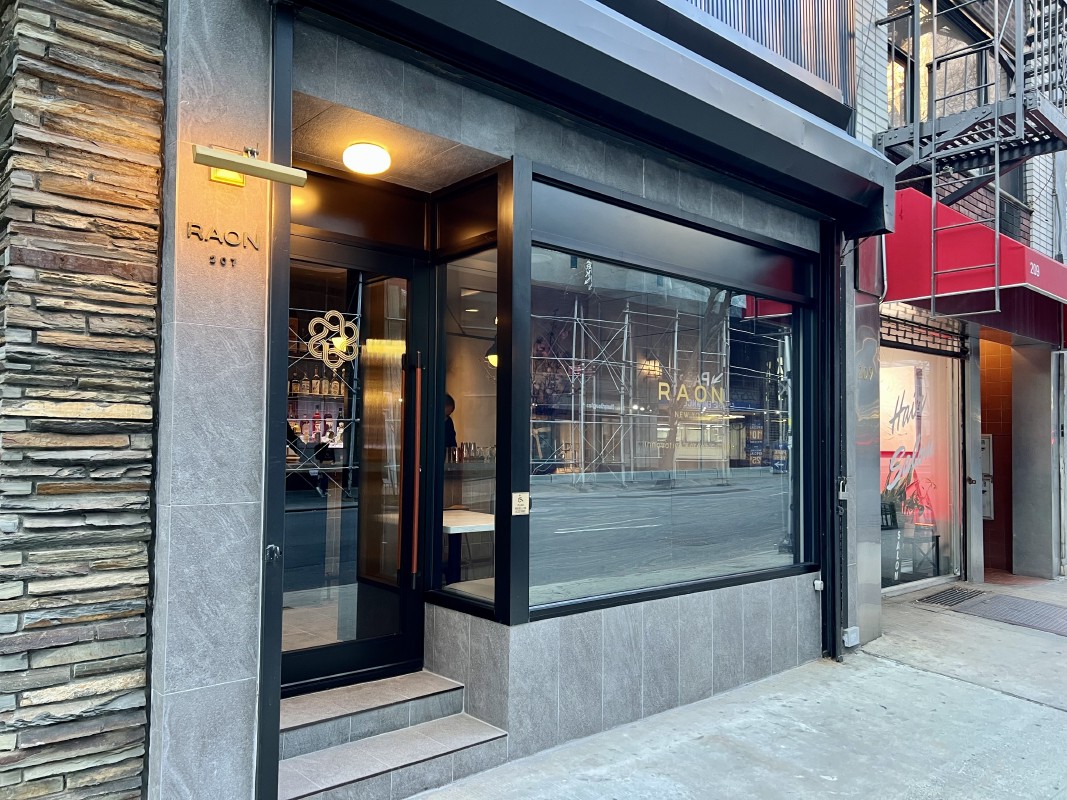
Raon is a new Korean tasting restaurant from Chef Soogil Lim and his wife, Sasook Youn. Their other restaurant, Soogil, is located in the East Village, and they’ve wanted to open a more intimate fine dining type of restaurant. One of the key features that attracted me to this was that they would a tasting menu centered around kimchi. When we went to Meju, we simply adored it. So we wanted to see how this would compare because both restaurants emphasize that kimchi is a key part of the experience. I was able to book a 5:00 PM reservation for a Saturday without much issue. I’m assuming it’s because the restaurant is still fairly new. The restaurant is very close to the N/W train off of Lexington and Bloomingdales.
Ambiance & Service
When you walk in, you’re greeted immediately by the concierge. There’s a bar in the front for if you arrive early and there are still diners from the previous seating. Luckily, we were part of the first seating, so we were seated immediately despite coming in 5 minutes early.
Throughout the night, the music had varying volumes, but it wasn’t uncomfortable. The music they played was some hip hop mixed with some mainstream rock. It was a very trendy type of atmosphere. There were primarily 2 servers out in the front, and sometimes you got a chance to see some of the cooks from the back.
The sommelier was very nice. I asked if they can make an abbreviated pairing for me, and they said they could. I’m not sure if it was because they are new and starting to build rapport, but it was a nice gesture. Initially, I was asking if it was possible for half pours of their glasses, but then I was curious if they could make me a pairing that was interesting. Their normal wine pairing consisted of some spirits, which I was uninterested in and I wanted just a few samples of wine and not larger pours.
The Chef was also very nice and appreciated because he came out at the end of the meal to greet the diners and express gratitude for coming.
Food
The tasting menu was $255 per person with an abbreviated wine pairing of $75.
- Cocktail - Cloud Blossom
- 1st Course - Crab With Ol Kimchi
- 2nd Course - Tuna & Caviar With Baek Kimchi
- Wine - 2022 Luis Seabra Xisto Cru Branco
- 3rd Course - New York Bo Kimchi
- Wine - Bodegas Poniente Palo Cortado
- 4th Course - Uni Gimbap With Jang Kimchi
- 5th Course - Scallop Doenjang
- 6th Course - Halibut
- Wine - 2021 Ministre Imperial
- 7th Course - Foie Gras Mandu With Mukeunji
- Preview - Sotbap
- Wine - 2021 Trefethen Cabernet Sauvignon
- 8th Course - Galbi + Sotbap With Dongchimi
- Dessert Pairing - Won Mae Plum Liqueur
- Dessert - Korean Pear & Makgeolli Sorbet
- Dessert - Platter of Sweets
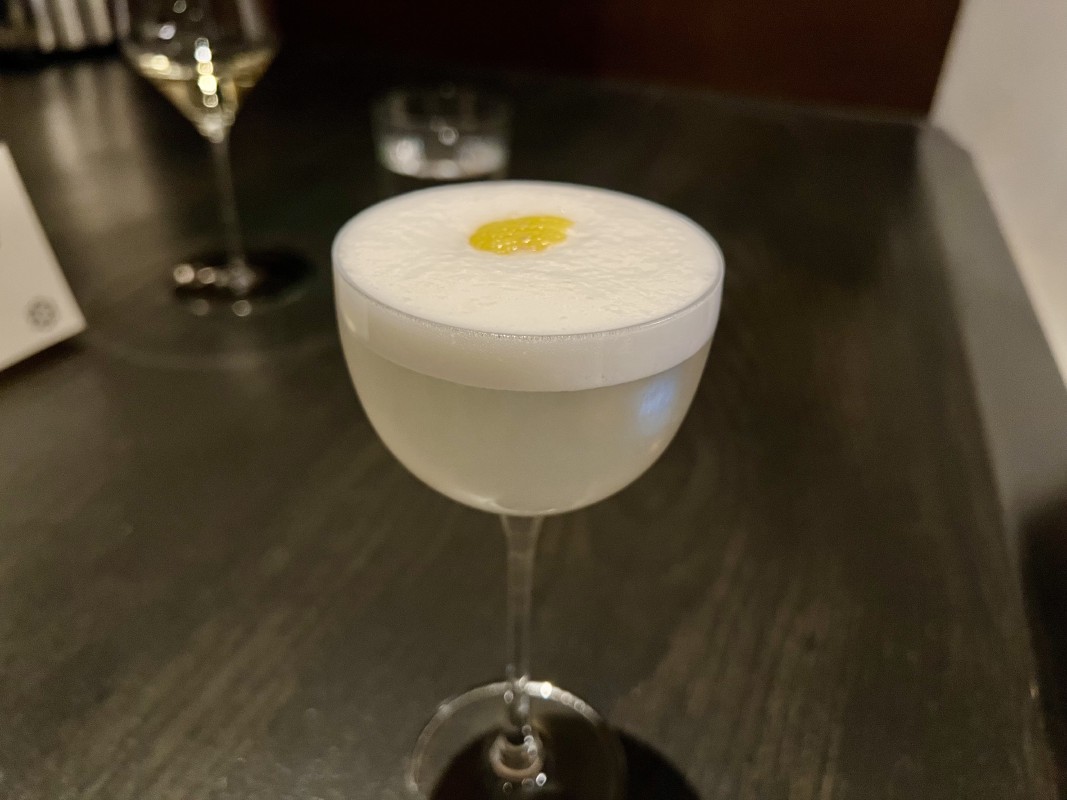
The Cloud Blossom ($25) came with St. George Pear, Neversink Gin, Sauternes, and Makgeolli foam. The ingredients sounded good, but unfortunately this missed all marks for my partner. I’m not a fan of gin, but usually I can tolerate it. This one was just awful, such that my partner only drank 25% of it. We saw another couple ordered this as well, but they also left it mostly untouched. I think the issue is that the ingredients clash a lot, despite them being premium ingredients.
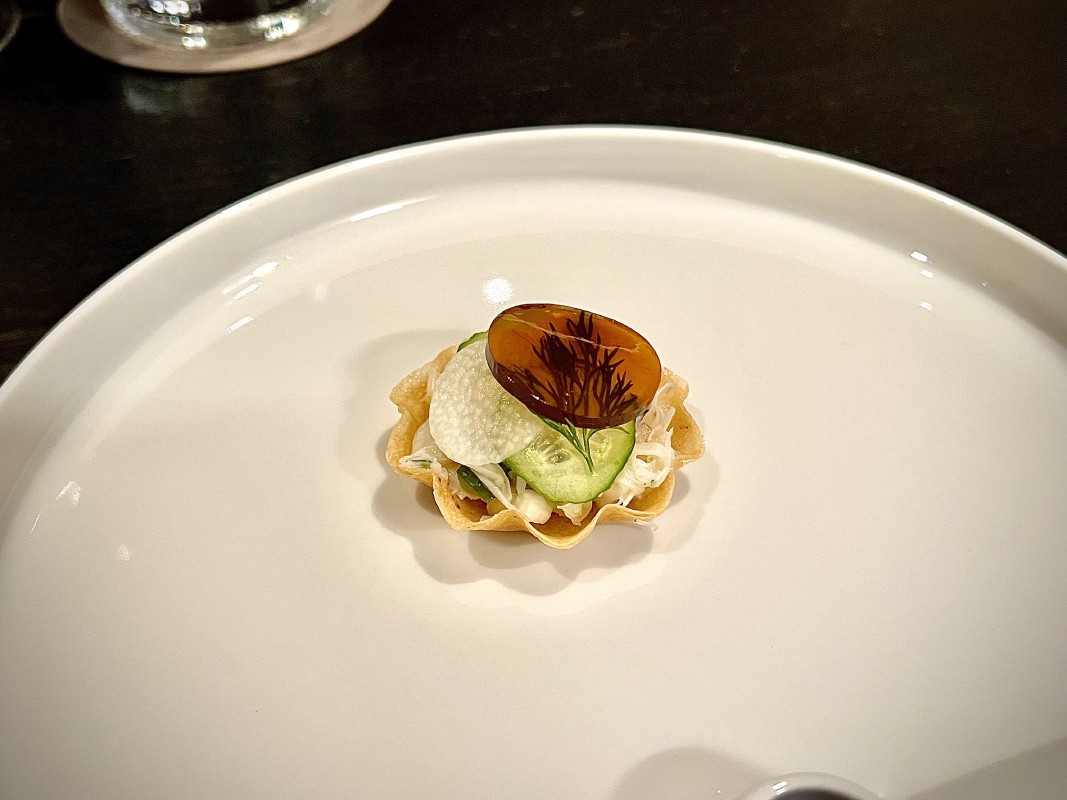
The first course was the Crab with Ol Kimchi. This was a dungeness crab tartlet with cucumber kimchi, some yam salad, and soy fermented clams. The crab was decadent and very sweet. I ate the whole thing in one bite, and you can taste each ingredient separately as well as how they all blend together. This was definitely a very delicious starter.
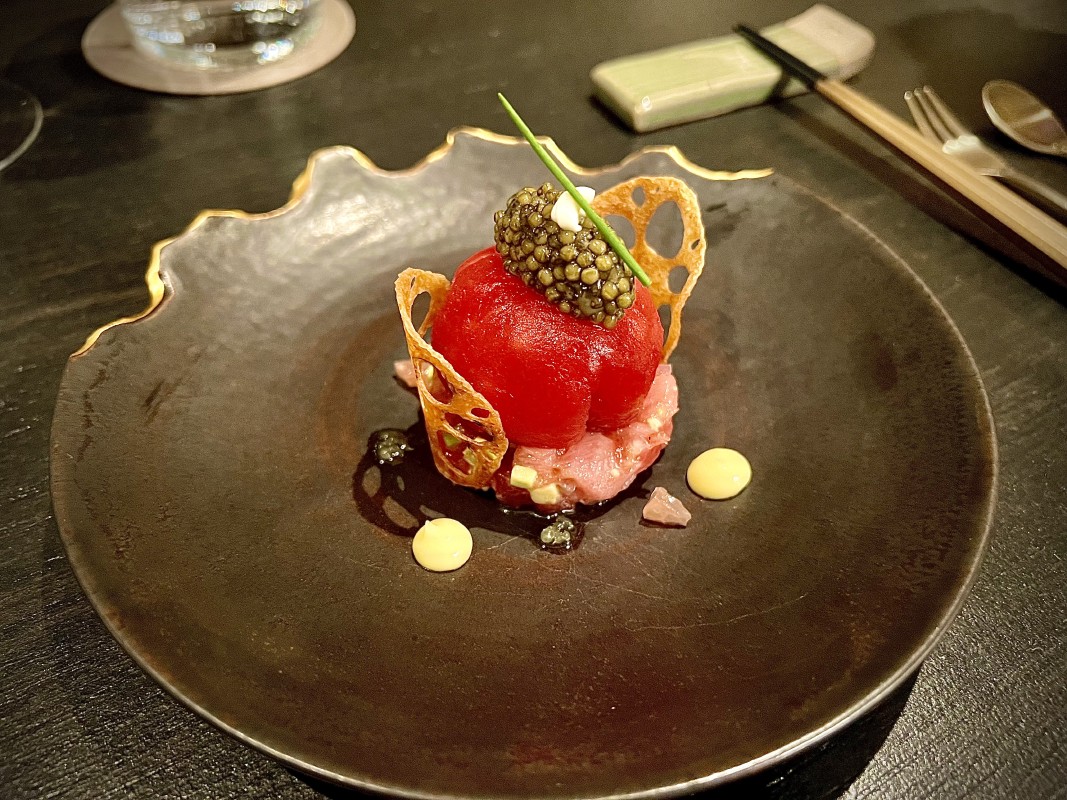
The second course was the Tuna & Caviar with Baek Kimchi. The Bluefin tuna was prepared two ways. On the top, the tuna is prepared sashimi style, paired with white kimchi and apple inside. On the top, they put Ossetra caviar. Underneath was Bluefin tuna tartar with citrus sauce and lotus root chip. The tuna was definitely very delicious, but it was very surprising how the white kimchi gives it a nice umami note along with the sweetness of the fruit.
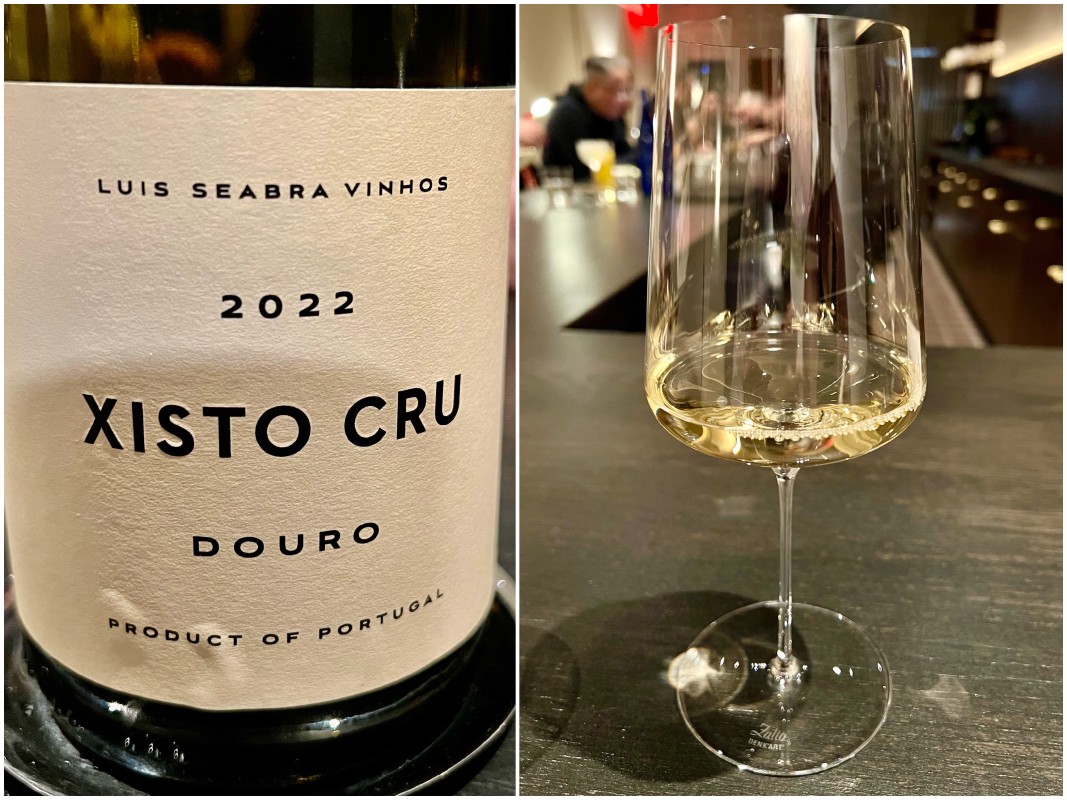
The white wine pairing for the next course, New York Bo Kimchi, was the 2022 Luis Seabra Xisto Cru Branco from Douro, Portugal. This was absolutely phenomenal. It had a very crispy acidity and minerality to it. The flavor was very interesting, and the texture felt thicker, with a subtle creamy sensation. Despite the medium body feel, it drank very smooth and matched perfectly with the next course.

The third course was the New York Bo Kimchi. It was a seafood terrine encased with kimchi, langoustine, abalone, and octopus. They poured dongchimi broth, which has a daikon radish and refreshing flavor to it. It also has a variant that is often used in naengmyeon, which is cold noodles in this similar type of broth. The seafood was very delicious along with the broth.
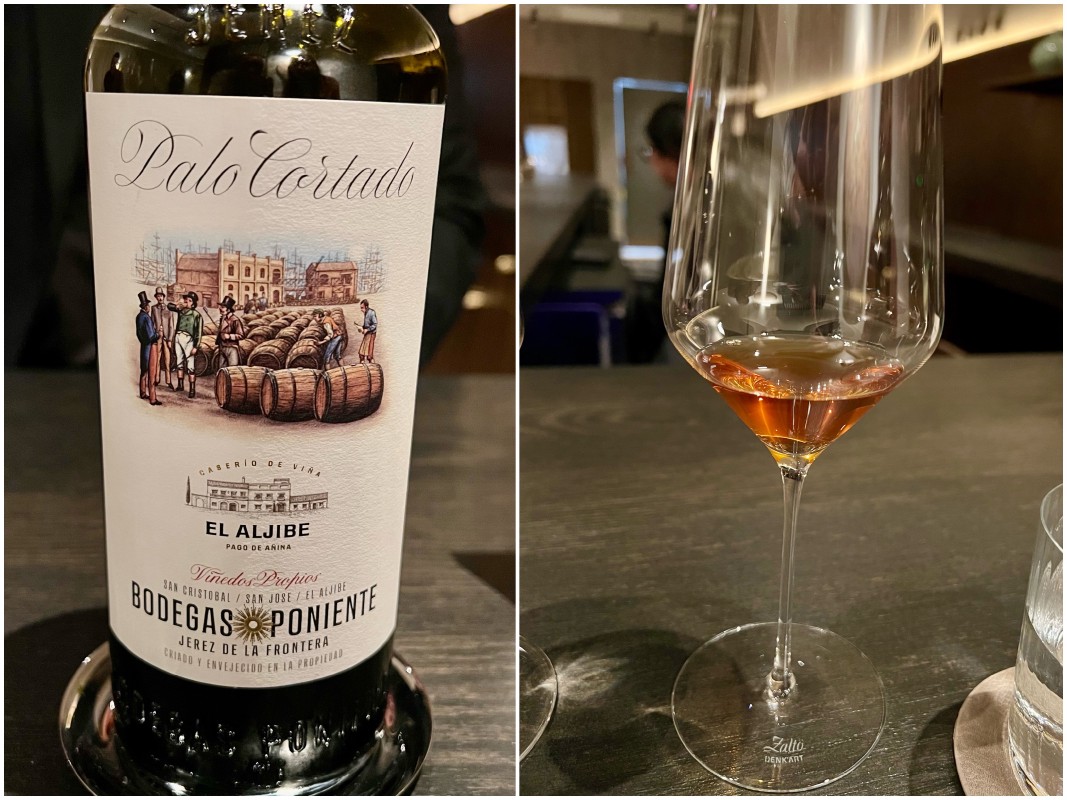
The sommelier wanted to pair the Bodegas Poniente Palo Cortado, a fortified wine, from the Jerez region of Spain with the next Gimbap course. It has a nutty and caramel texture to it with a savory taste to it. The alcohol content is quite high in this, so it wasn’t good to drink by itself.
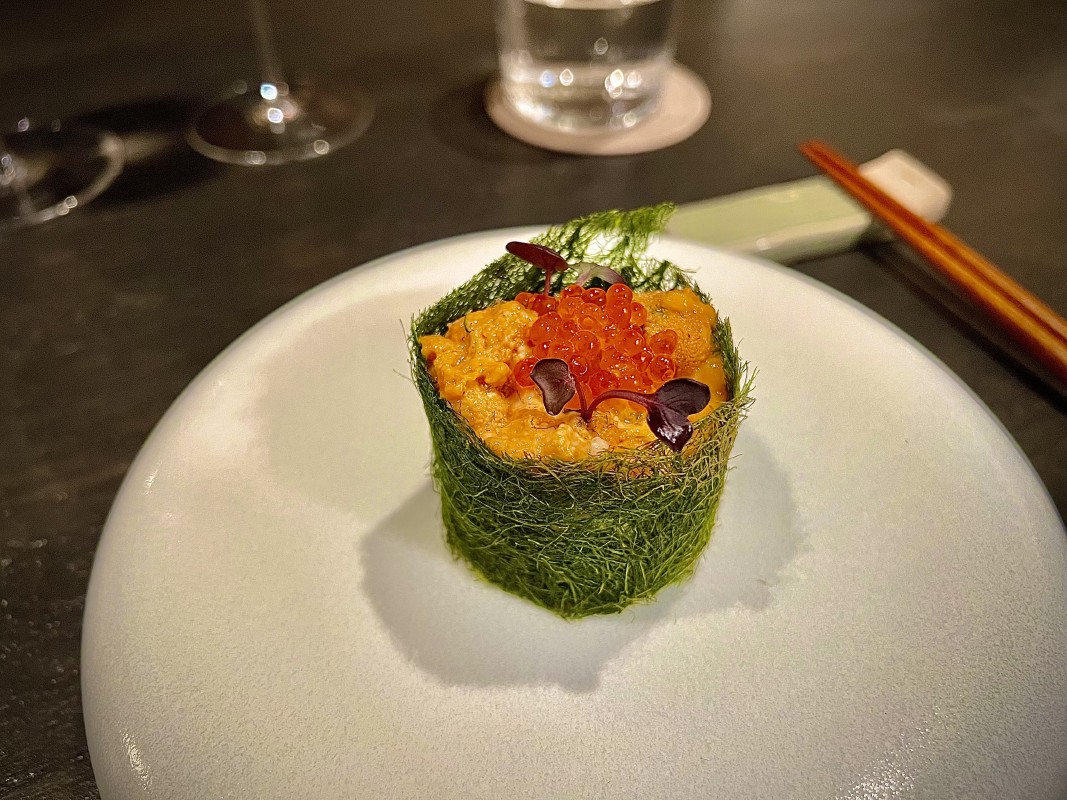
The fourth course was the Uni Gimbap with Jang Kimchi. My partner also received a 5g bump of Golden Osetra Caviar for $30. The bottom had seaweed rice with kohlrabi jang kimchi, which was soy marinated. On top, there is a nice layer of Maine sea urchin. Around this gimbap was a type of seaweed that was only harvested from two places during the Korea winter time. The seaweed had a nice earthy, grassy flavor to it which was quite different than the traditional seaweed you usually eat with this. With the fortified wine, it actually finished the gimbap quite nicely. This gimbap was quite rich and bold in flavors, but the Palo Cortado was definitely on the opposite side of this. It rounded the flavors in a very interesting, but nice way.
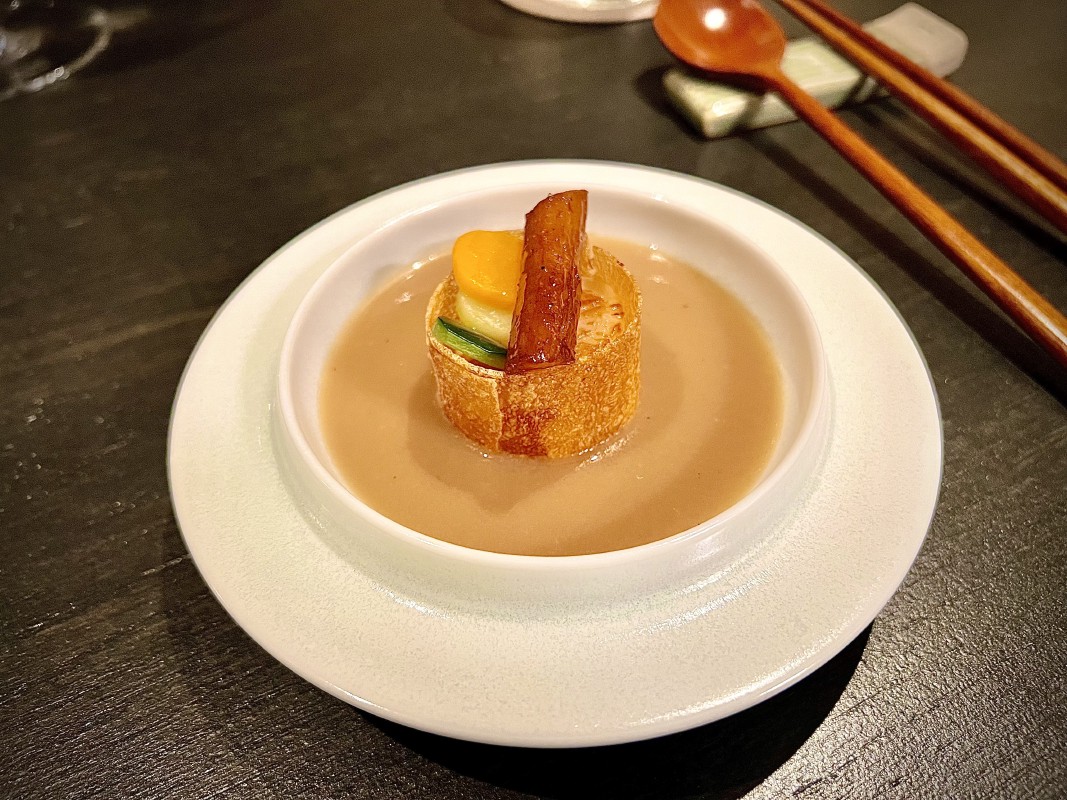
The fifth course was the Scallop Doenjang. This was a Hokkaido scallop, wrapped with potato and served with doenjang soup. Made with 7 year aged soybean paste by venerable Jeong Kwan, who was featured in Chef’s Table and collaborated with a lot of local New York City restaurants. The scallop was cooked perfectly, and the doenjang was very delicious and full of umami flavors. I still had some leftover Xisto Cru Branco, and this paired well with this too.
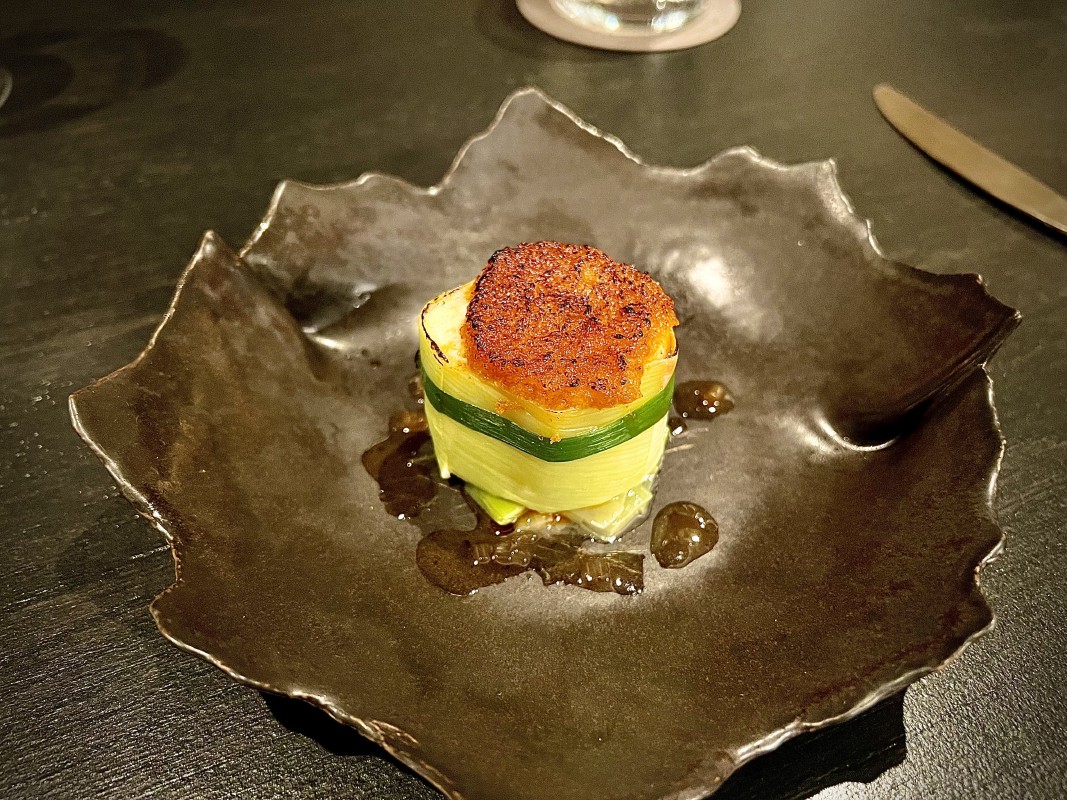
The sixth course was the Halibut. This was wrapped with leek, and placed on top of assorted leek. The top was a gochujang (red pepper) crust. There was a delicious brown butter sauce around the bottom. The halibut was cooked perfectly, but it was hard to cut into the leek. What ended up happening was the fish ended up becoming a slight mashed mess because the knife wasn’t sharp enough to cut cleanly through the wrapped leek. Still, the dish was overall very good.
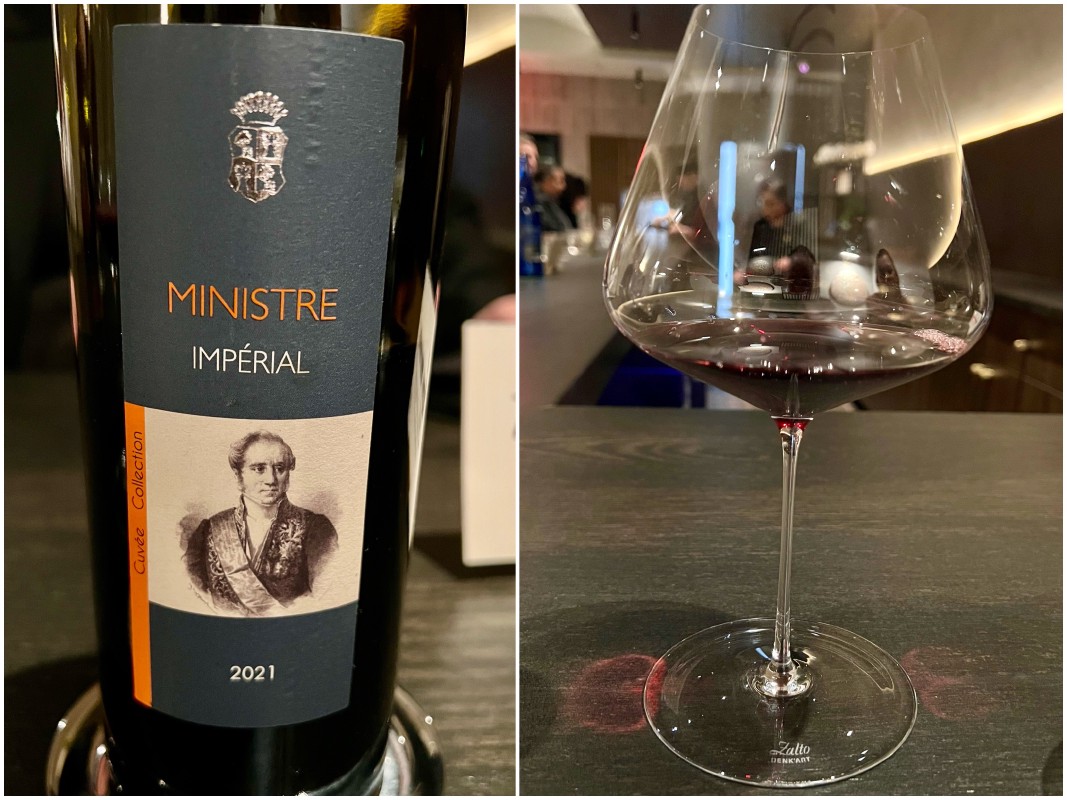
Now comes the red pairing. This was the 2021 Ministre Imperial from Domaine Comte Abbatucci, Corsica, France. This can be described as medium body, earthy, some tannins, light, and easy to drink. The sommelier felt this would complement the next course, foie gras mandu.
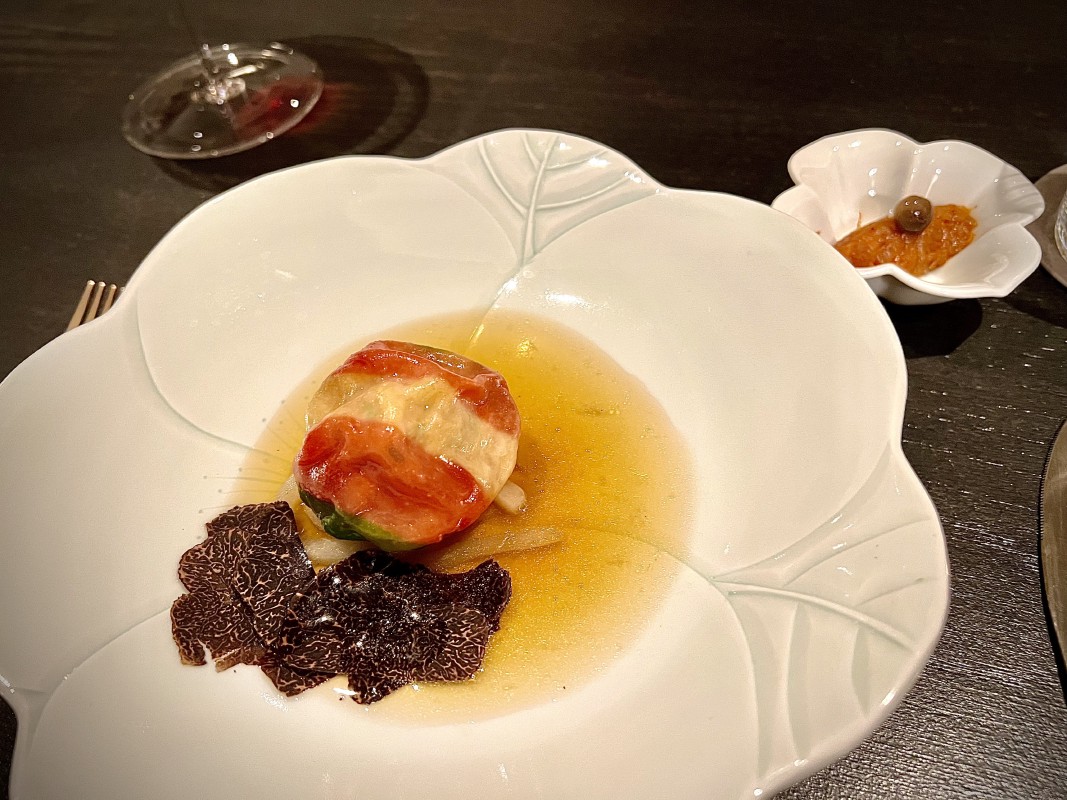
The seventh course was the Foie Gras Mandu with Mukeunji. The mandu (dumpling) was filled with duck meat and Hudson Valley foie gras. It was served with duck consomme and some sliced black truffle. They finished it with 5 year aged soy sauce from the same place as the 7 year aged soybean paste in the scallop course. On the side, they served Mukeunji kimchi with a caramelized onion, which had a nice deep flavorful, peppery kick to it. The red wine above paired very nicely with this. I still am never going to understand black truffles much as their flavors are very subtle and earthy. It’s not something I would really care much about. Regardless, this course was surprisingly very good with the wine pairing.
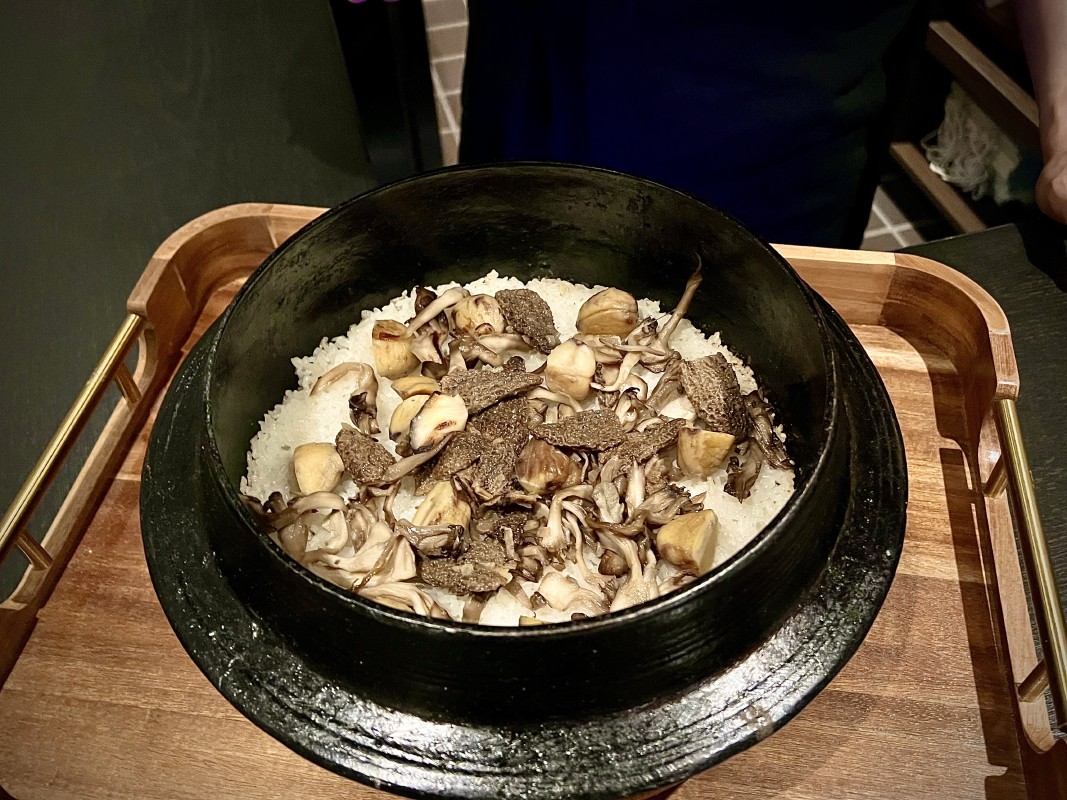
This was a preview of our final savory course. It was a stone pot full of rice and … mushrooms.
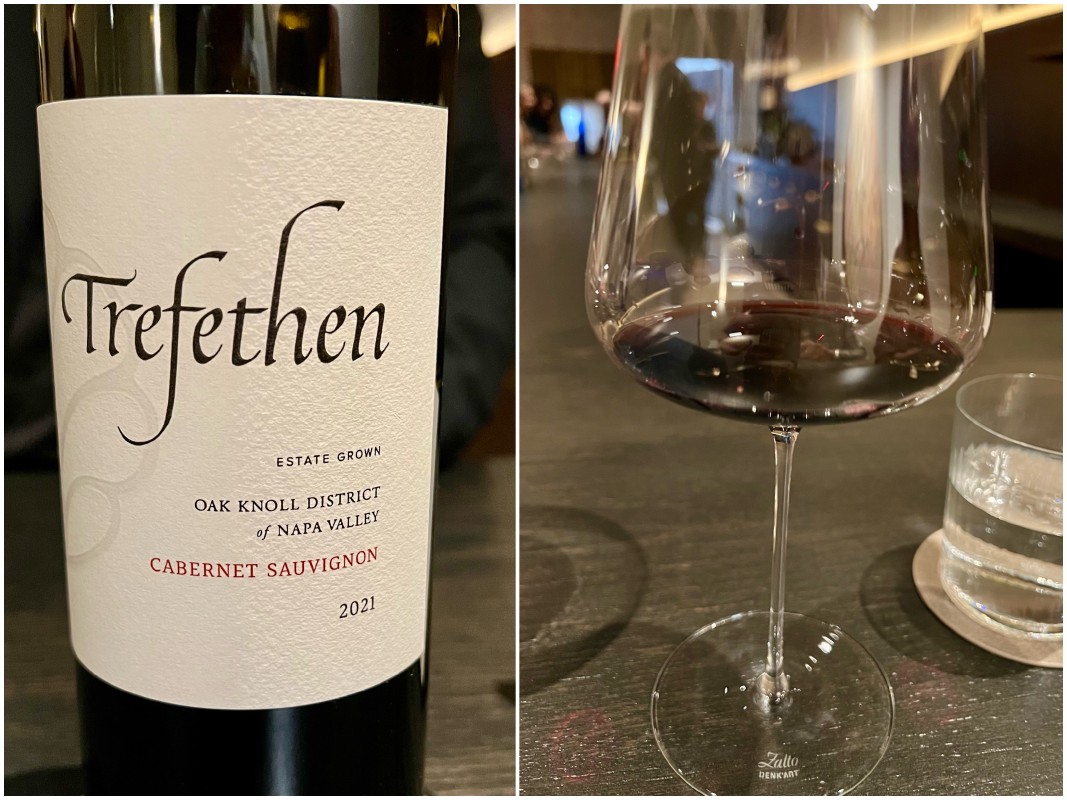
The final savory wine pairing was the 2021 Trefethen Cabernet Sauvignon from Oak Knoll District, Napa Valley, California. This had noticeable dark fruit structures, leather, lots of oaky & woody flavors, and more full body. You can smell a bit of the vanilla and black fruits easily.
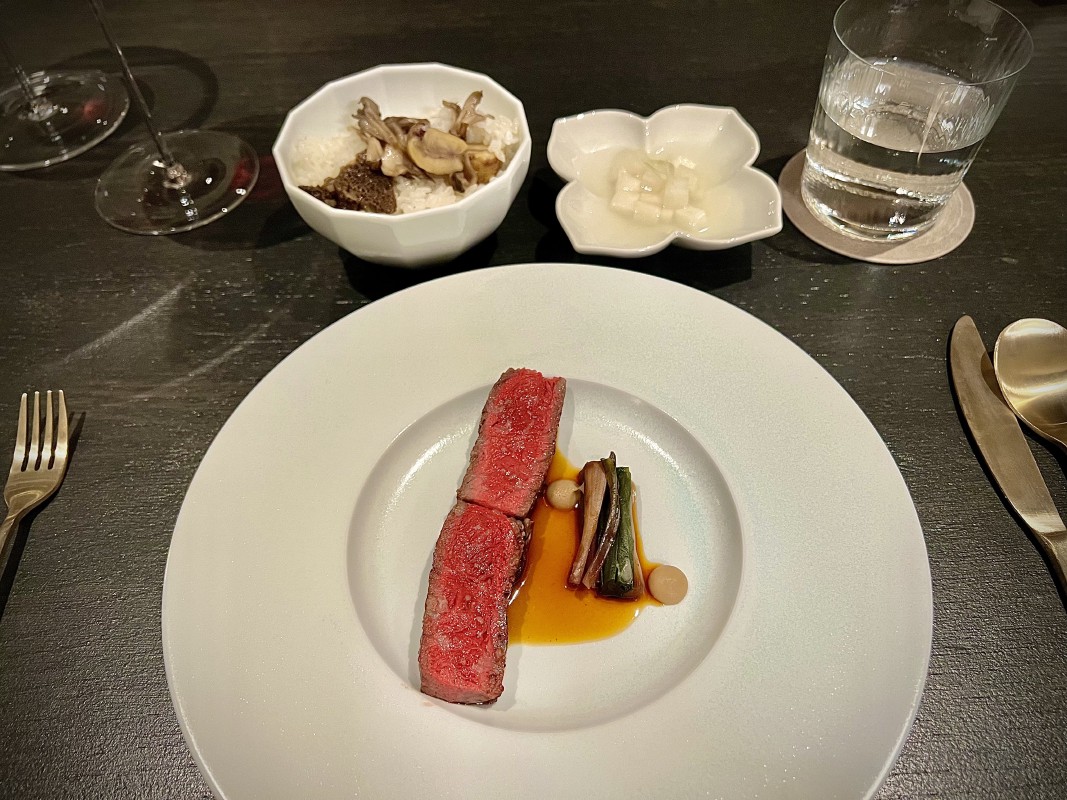
The final savory course was the Galbi + Sotbap with Dongchimi. The galbi, if I heard correctly, was an American Wagyu flatiron steak. It was served with soy pickled vegetables (very similar to Chinese soy pickled cucumbers) and a dot of chestnut puree. On top, they poured a bit of a galbi red wine reduction. At the top is the serving of the mushroom sotbap, which was stone pot rice served with morel, hen of woods, and chestnut. For the kimchi, they served dongchimi (pickled daikon), which was intended as a palette cleanser.
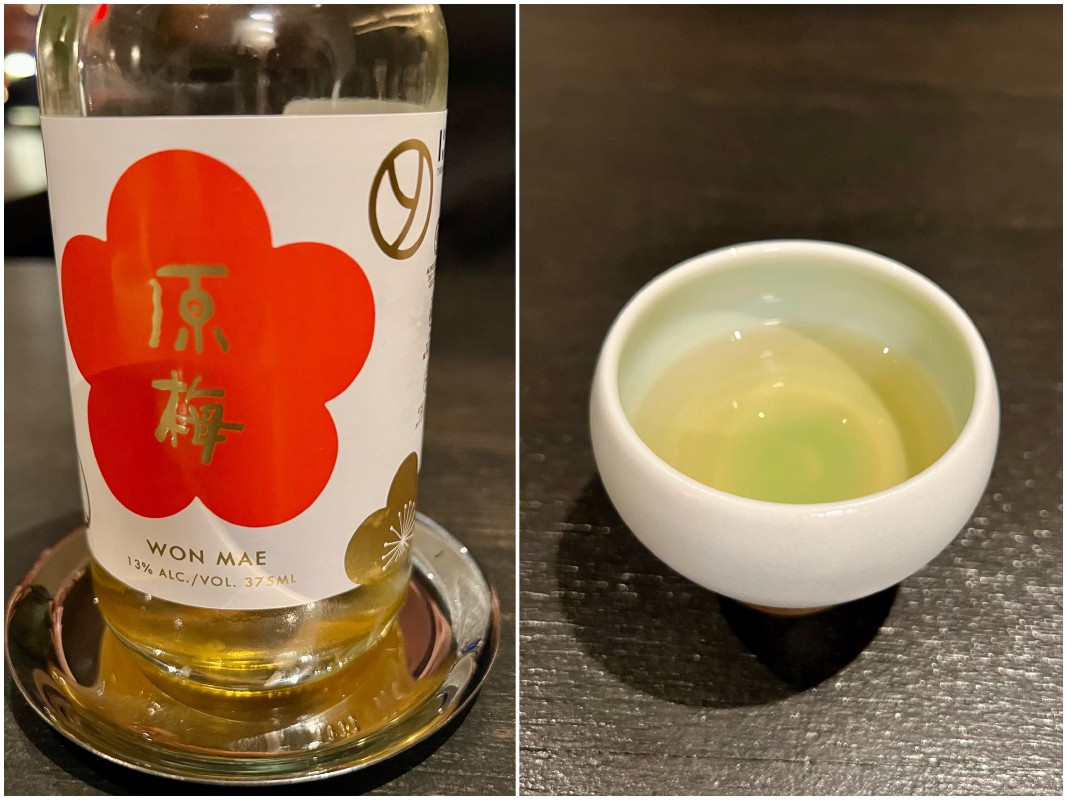
For the dessert pairing, the sommelier provided this Han ‘Won Mae’ Plum Liqueur from South Korea. This was made with Korean golden plums. To the nose, it reminded me a little of almond scented tofu. I thought this was OK as I’m generally not a fan of these sweet liqueurs.
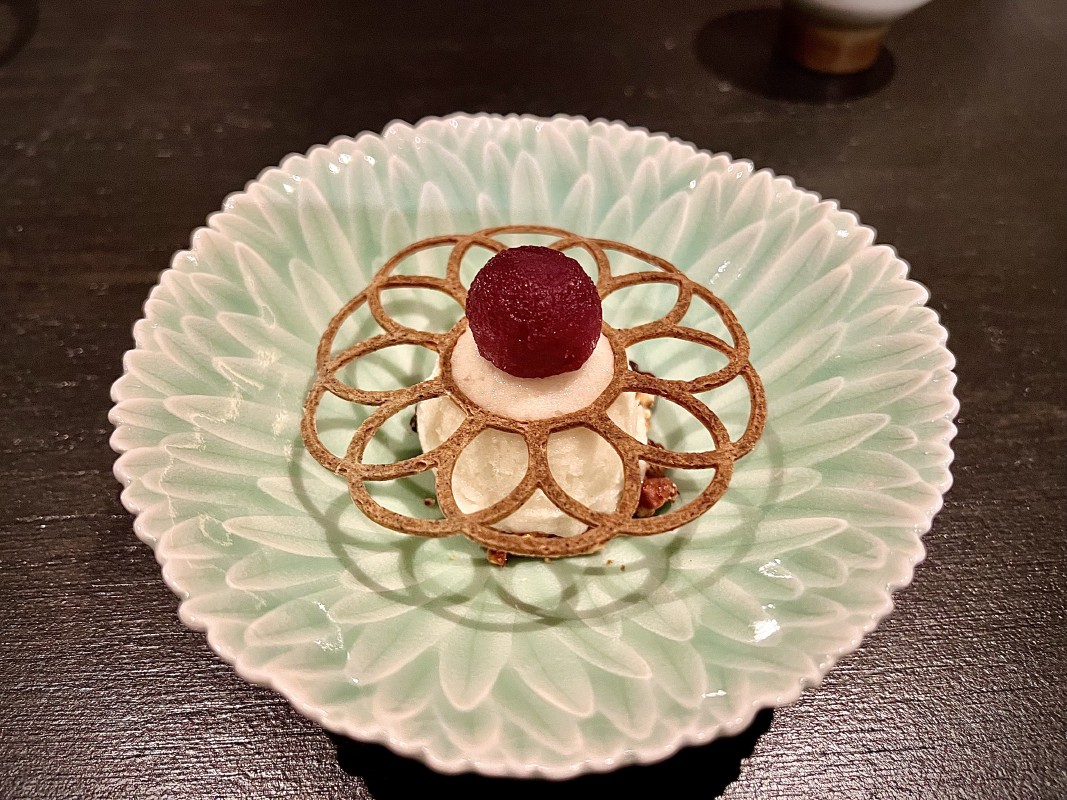
The first dessert was a Korean Pear and Makgeolli Sorbet. This came with a red wine-poached pear and finished with a black sesame tuile. The sorbet was tart but very good and refreshing. The red wine-poached pear was interesting in that it gave me some licorice notes, and the pear had a similar texture to an apple.
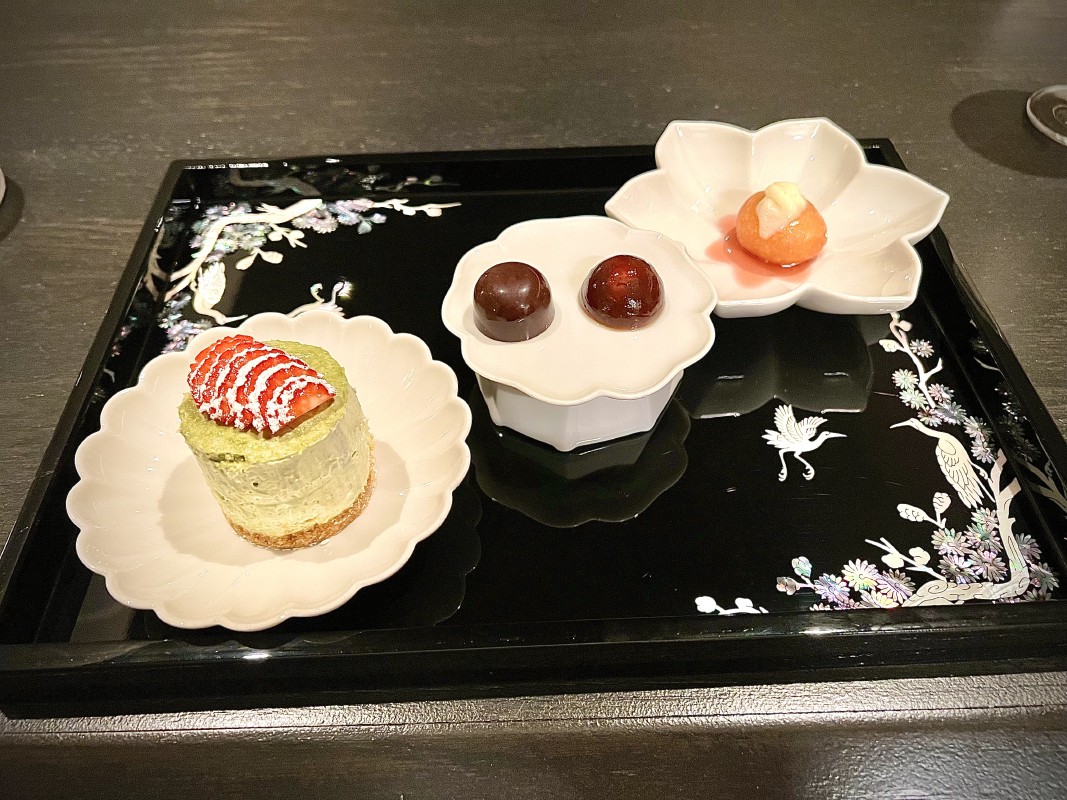
The final dessert was a Platter of Sweets.
This included:
- Matcha cake - Bottom left. This was a white chocolate matcha cake with honey brioche crust and strawberries.
- Gaeseong Juak - Top right. This was a fried rice cake, served with vanilla mascarpone and strawberry syrup. The fried rice cake is very similar to Korean fried donuts.
- Hongsam (Korean red ginseng) Chocolate - Middle left. This was red cream and ginseng dark chocolate bonbons. All the ingredients were incredibly delicious.
- Espresso Yanggaeng (sweet red bean jelly) - Middle right. This was a sweet jelly with espresso. It was interesting as I’ve never had this flavor combination before.
Final Verdict
We felt this restaurant’s menu was all consistently, very good throughout the night. The price is a bit steep, in my opinion, but the flavors are there. We wouldn’t be surprised if this is able to get a Michelin Star eventually if they keep it up. Compared to Meju, I think this is a very different restaurant. Meju focused on more rustic cooking, and this one definitely highlights some of the chef’s skills that he acquired working at Daniel and other places.
Yelp Jabs
Probably the first and only 8 course Korean tasting menu featuring fine royal kimchi recipes within each course in NYC if not the States. Kimchi is delicately infused and blended in with the seasonal ingredients from sea and land reveals beyond its general identity as side dish.
Most courses had kimchi “blended” in. Some were legitimately served as a side dish. There have been options in other restaurants where they mix kimchi into the meal, so the flavors should be familiar if you have tried a wide variety of Korean restaurants. Regardless if you have had pickled or fermented things in your meal, this is similar to that, but just with much more finesse.
Revisions
- Mar 8, 2025 - Initial revision.